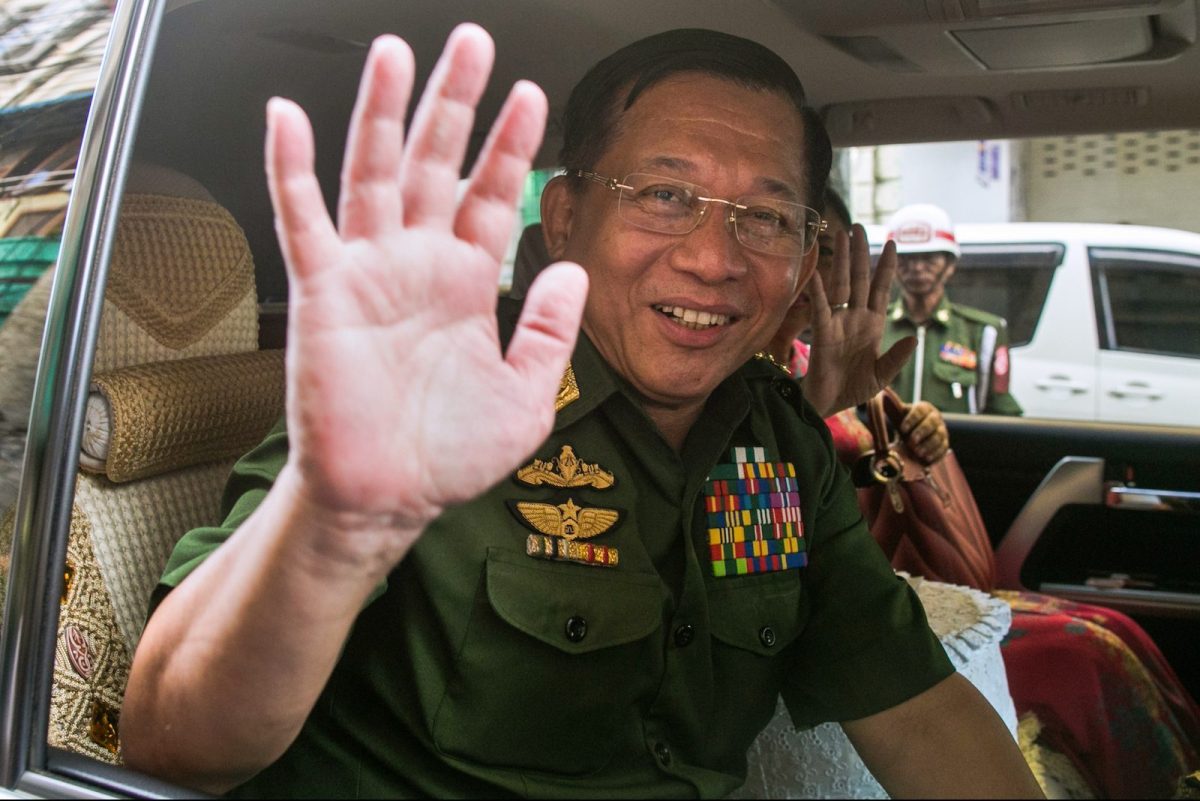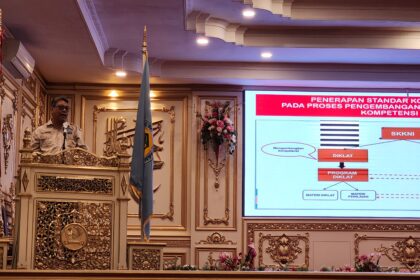[ad_1]
On the outskirts of the Shan state city of Lashio, the community cemetery is divided by faith: Buddhist, Christian, Hindu and other denominations.
But symbolizing the distance between civilian and soldier in modern Myanmar, across a small gulley is a graveyard full of hundreds of white crosses, casualties of the bloody 2009 campaign waged between the military, or Tatmadaw, and ethnic Chinese Kokang rebels.
The commander of that lethal operation was General Min Aung Hlaing, then-commander of the Bureau of Special Operations-2 encompassing northern Myanmar and Shan state, a region rife with multiple armed groups, drug production and lucrative legal and illegal border trade.
Min Aung Hlaing’s leadership of the Kokang offensive propelled him two years later to military commander in chief – a position he leveraged to overthrow the nation’s democratically elected government in a February 1 coup.
At the time of his promotion, Myanmar was gradually transforming as the widely reviled dictator Senior General Than Shwe and his hand-picked, ex-general civilian successor Thein Sein set in motion the long-planned Seven Step Roadmap to Democracy and “discipline flourishing democracy.â€
Min Aung Hlaing is now the latest in a short line of Myanmar military despots, from the original coup-maker General Ne Win who ruled between 1962 to 1988, the short-lived reign of General Saw Maung who staged the September 1988 coup before his descent into literal madness, and then the ultimate military Sphinx Than Shwe, whose heavy-handed 1992 to 2011 regime hatched the military-protecting 2008 constitution.
Speculation on Min Aung Hlaing’s character has focused to date on his egotistical competition with now detained State Counselor Aung San Suu Kyi. Yet looking at three features of his performance as commander-in-chief could put the man in the context of the military institution: vainglory, ruthlessness and corruption.
The February 1 coup d’état was the culmination of years of maneuvering around his nemesis Suu Kyi and concerns over his uncertain retirement plan when he reached the age of 65 later this year.
His February 8 speech in which he tried to justify the coup bore all the hallmarks of a dictator who had clumsily updated the cadence of repression from previous regimes, leading with the creepy observation that the Tatmadaw “holds the high opinion that People are the parents.â€
He then stated that over the past ten years the military had been “following the leading role in national politics steadfastly and adhering to the provisions of the 2008 Constitution.†In other words, we the military were in charge all along.
Promising a future election, getting business back on track, reopening schools, continuity in foreign policy, tackling the Covid-19 pandemic, Min Aung Hlaing put forward a litany of lies one has come to expect from the smugly deceptive soldier.
Min Aung Hlaing is certainly much more media-savvy than his staid predecessors.
In 2015, he gave an interview with the BBC where he said, “If the people get the right information about the army they will understand us… They’ll see the military is defending the interests of the people and implementing the interests of the people and defending against threats to the country.â€
This is when he enjoyed a large following on Facebook, before he was banned from the platform in August 2018. He even went so far as to print a booklet of his interviews with international media outlets and gift them to visitors. He has been recently courted by the Russian media, with his personal website reprinting recent interviews.
In 2019, he uncharacteristically visited a number of mosques, churches and Hindu temples to hand out gifts, as if to signal intercommunal calm. In retrospect, it was another squalid performance of promoting his sense of ultimate power.
Any reading of his speeches to the Union Peace Conference (UPCs) reveals clearly he had not an iota of sincerity for genuine peace, and used the occasions to bait long-standing ethnic armed group leaders, claiming that ethnic Kachin were a minority in their own state, and reminding Shan rebel leader Yord Serk he served a notorious drug warlord.
Yet despite all his best efforts, he remains an enigma in the West; most media can’t pronounce his name properly (Al Jazeera must have an internal policy to purposefully mispronounce “Hlaingâ€).
Amnesty International rightly placed his face on a “wanted†poster entrenching his notoriety, but he has been feted in Moscow, Beijing Delhi and capitals in Southeast Asia.
During most of the transition decade, Min Aung Hlaing and the Tatmadaw were perceived as benevolently passé, as many donors flocked to support Suu Kyi, lavish development funding in supposedly “post-conflict†areas, throw funding at a shoddy peace process, and dismiss ongoing reports of Tatmadaw abuses against ethnic communities in the spirit of let brutal bygones be bygones.
That complacency was shredded following the October 2016 response to the initial Rohingya militant’s attacks. The following August, Min Aung Hlaing’s mass ethnic cleansing campaign expelled over 700,000 Rohingya into Bangladesh.
Reports of rape, killings and arson were a command performance of crimes against humanity following decades of pacification throughout the hinterlands of Myanmar.
Many people failed to adequately incorporate Min Aung Hlaing’s innate ruthlessness, borne of a 40-year career in a military institution that waged almost incessant civil war and where abuses against civilians are part of a deeply entrenched culture of sadism.
The failure to address entrenched impunity, domestically and internationally, contributed to the Tatmadaw’s conviction of invulnerability.
Accountability measures over the past three years may have rattled Min Aung Hlaing. But his domestic supremacy seemed unassailable, unless he calculated that a second term National League for Democracy (NLD) administration would prioritize going after him personally and chipping away at the Tatmadaw’s constitutional privilege.
To fully understand Min Aung Hlaing, he should also be viewed as the chief executive officer (CEO) of a vast kleptocracy. His ultimate control of the military budget and the extensive portfolios of the military holding companies UMEH and MEC, as well as his son Aung Pyae Sone’s extensive business holdings, guarantees he is hugely and wrongly wealthy.
Efforts to uncover the Tatmadaw’s business holdings, either through the UN-formed Independent International Fact Finding Mission on Myanmar or the clandestine research group Justice for Myanmar and Amnesty International, have clearly established the details of conglomerate plunder.
The next step is how to imperil those holdings and exert economic pressure on the Tatmadaw. Those efforts might well be accelerated post-coup, but there are significant limitations of international pressure now, especially as the Tatmadaw can rely on hush-hush regional banking centers such as Singapore.
Min Aung Hlaing’s “savior of the nation†rhetoric is an update of the Tatmadaw’s conflating the nation with the militaristic state, expressed in past propaganda slogans such as “Only when the Tatmadaw is strong will the nation be strong.†Yet Myanmar is a very different country from the last coup in 1988.
Most crucially, the pendulum of pressure on Min Aung Hlaing is domestic: he has picked a fight with almost the entire country. Average people in Myanmar have the measure of the man, in his arrogance, his brutality and his corruption.
That’s seen in the now almost nationwide symbol of “CinC†crossed out and stamped on at anti-coup protests now mushrooming across the country. It could be heard during his February 8 speech, when people furiously banged pots and pans at his image on television.
Myanmar’s archetype military dictator may thus have become the agent of his own demise – from the very people he expects to fear him.
David Scott Mathieson is an independent analyst working on conflict, peace and human rights issues in Myanmar
[ad_2]
Source link










